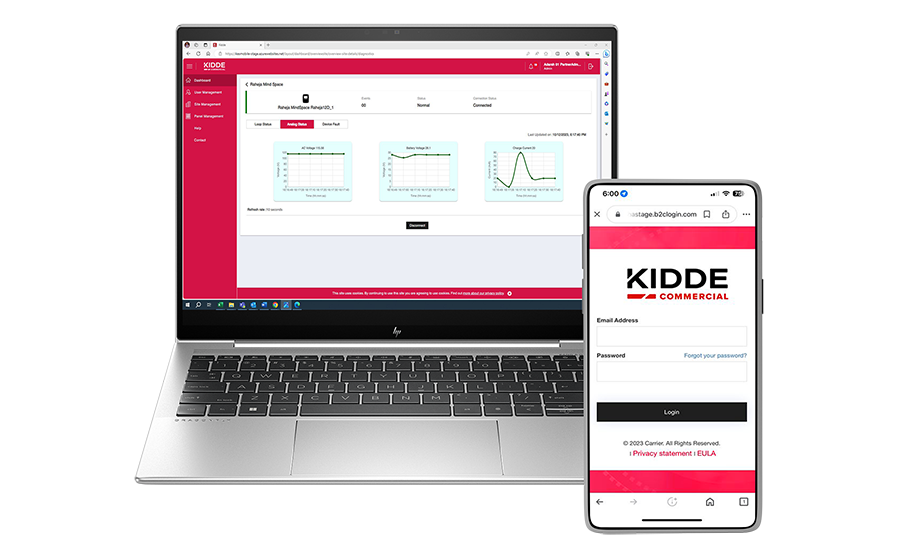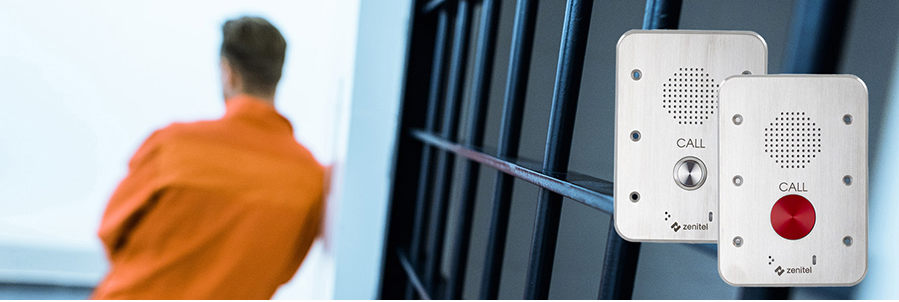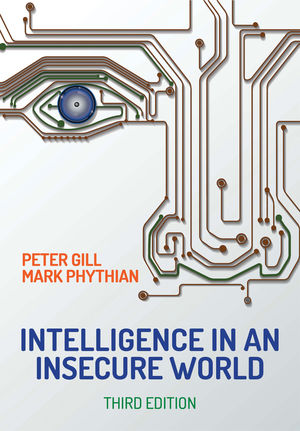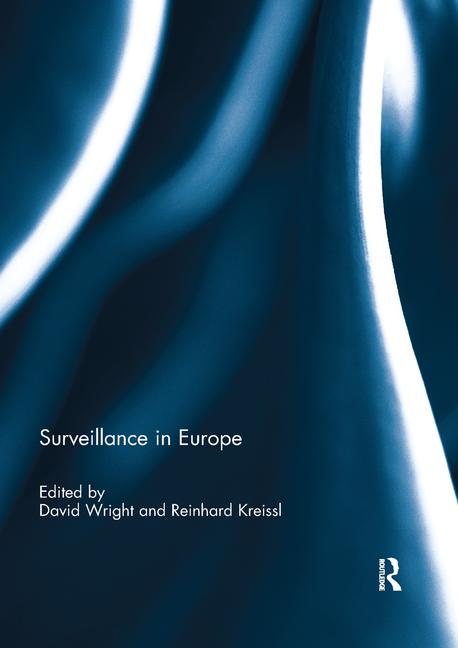The reliability and effectiveness of emergency communication systems have become a cornerstone of public safety and disaster response. The very essence of these systems lies in their ability to expedite alerts, warnings and other vital information, ensuring that individuals and communities can respond swiftly and efficiently in the face of a crisis.
Moreover, these systems must meet the growing demand for interoperability and compatibility, ensuring that diverse communication platforms can seamlessly connect during critical moments. SDM tapped the expertise of several ecosystem professionals to flesh out the ever-evolving landscape of emergency communications. Read on as they shed light on the latest market trends and technological advances, as well offer advice for installing security contractors to provide end customers looking to invest in or upgrade their emergency communication systems.
Technological Advancements Enhance Effectiveness
Recent technological advancements have ushered in a new era of effectiveness, transforming the way we alert, inform and protect communities in times of crisis. For example, EMERgency24, Des Plaines, Ill., developed an Incident Command and Control System (ICCS) with multiple facets including emergency communications. Notifications can be pre-set or tailored on the spot based on the event, explains Steve Mayer, vice president operations and administration.
“Since ICCS offers the ability to differentiate messages to different groups, schools or offices can send unique messages based on definitions of groups or subgroups,” Mayer says. “Managers of a location’s ICCS can also enable or disable two-way communication capability. ICCS is currently being used in active shooter alert systems deployed through BluePoint Alert Solutions in schools, religious institutions and offices across the country. ICCS can also be used for communicating during fire or other critical alert scenarios.”
One key advancement with intercoms for emergency communications is the ability for the intercom to send an alert to the operator when it’s not working properly or has been tampered with. For instance, Zenitel Americas’ new VR3G-1 and VR3G-1P intercoms are equipped with a tamper switch alarm to notify operators of any potential security issues such as tampering or attempted removal from a wall, explains Bruce Czerwinski, vice president of sales. The VR3G-1P additionally has a scheduled self-test that is enabled through a flush design Piezo button.
“The ability to integrate emergency communications solutions into access control and VMS solutions continues to be an important technology advancement,” Czerwinski says. “That integration provides several benefits to a security team to include faster response time and more information to first responders. Security teams can see and they can hear what’s happening in a situation in order to be prepared and to create the most effective response plan.”
“From an overall security perspective, video surveillance coupled with emergency communications can significantly enhance broader situational awareness and emergency management.”
— Ewa Pigna, LenelS2
Over and over, clear audio adds “ears” to a security team’s “eyes,” Czerwinski continues, which are important tools to have in any circumstance. “In an everyday situation or in an emergency, people will also respond to voice versus physical signage that they may not see.”
Kartik Kumar, commercial fire vice president and managing director, Edwards, Palm Beach Gardens, Fla., says the company’s Genesis LED Mass Notification system, launched in November, blends state-of-the-art audio tech with a Speech Transmission Index (STI) rating of .81, surpassing the “excellent” rating by 6 percent, while offering four visual color options for event notification coding.
“A challenge faced is that although this advanced technology is available, fire code regulations do not require mass notification systems for all building types and, often due to cost and time constraints, are not included,” he explains.
Additionally, Edwards ConnectedSafety+ and Kidde Commercial KESMobile provide real-time remote system monitoring. These SaaS applications provide real-time data remotely and on-site to a single dashboard that can inform users of system diagnostics real-time.
“Emergency communication system developers, operators and first responders continuously seek ways to reduce event response time,” Kumar says. “Now, fire and safety systems can leverage integrated cloud technology for real-time data collection and actionable insights.”
Ewa Pigna, CTO, LenelS2, Pittsford, N.Y., cites the increased connectivity of field devices such as microphones, speakers and call boxes that provide near real-time communication capabilities as having a significant impact on emergency communications’ effectiveness. “Location-based technology is also driving the need for more precise communication and identification of various communication requests,” she says.

Leveraging the IoT & AI to Improve Situational Awareness
Connectivity of field devices is the single most important factor that will continue to facilitate more efficient communication across networks, Pigna says. “From an overall security perspective, video surveillance coupled with emergency communications can significantly enhance broader situational awareness and emergency management,” she says.
Pigna’s colleague at LenelS2, Stephen Russo, head of product management, adds artificial intelligence (AI) and machine learning techniques, such as link analysis, are being leveraged across security systems to rapidly process large amounts of data and improve efficiency. “This can help deliver better, quicker insights to improve situational awareness and favorable outcomes during emergencies,” he says.
Looking ahead, Kumar believes the adoption of IoT and AI is poised to revolutionize the communication channels between emergency sites and first responders, drawing inspiration from the user-friendly technology applications seen in today’s consumer market. To date, both IoT and AI have been focused on the availability, not reliability, of data and system communications, he explains.
“The IoT and AI application capabilities found in consumer products exceed what the fire and safety industry is confident about relying upon, as life safety is an outcome that cannot be compromised,” Kumar says. “Put another way, many of the latest developments across the industry are truly revolutionary and exciting. While many of the innovations are not fully realized, the rate at which our industry is advancing is truly exciting.”
Kumar also says there is a consumer demand for the fire/life-safety and emergency communications industries to better leverage the power of IoT, but there is no standard practice to obtain and disseminate the information. Additionally, aligning on a system to achieve this can be quite costly, he says.
“Consumer products rapidly change and adopt new technologies, but because of the vigorous testing and slow code adoption processes, we see a lag in technology development and adoption,” Kumar says.
Moving forward, Kumar suggests these changes will be revolutionary. “However, as it relates to life safety, we need to ensure these changes are incorporated in a manner that does not diminish their required effectiveness,” he says.
“From my perspective, I believe the best way to gather essential emergency communication system information about regulations, design considerations and emerging technology is to connect with experienced individuals within the industry who have gone through the process of installing and managing emergency communication systems.”
— Kartik Kumar, Edwards
One example where AI is being leveraged for emergency communications is Allied Universal’s proprietary platform LISA or Live Interactive Support AI. The platform enables the seamless exchange of critical information designed to enhance operational efficiency of security professional assignments, amplify communications between the frontline workforce and streamline deployment of individuals.
In 2022, LISA aided in assembling and deploying more than 500 security professionals for Hurricane Ian recovery efforts in Southwest Florida. Using the platform, text messages were sent to over 14,000 people, detailing roles and job opportunities. Within 24 hours, more than 1,700 individuals responded, eliminating the need for time-consuming phone calls. LISA’s efficiency ensured accurate contact information verification by allowing security professionals to update and/or provide their contract information when signing up to use the system.
With the help of LISA, these individuals were able to continue their assignments to protect people and property in critical infrastructure, energy, financial, government, healthcare, hospitality, insurance and retail sector, explains Allied Universal CIO Mark Mullison.
“We’re proud of how our security professionals, operators and LISA worked together to help Florida successfully address the hurricane disaster and recovery efforts,” Mullison says. “This is a great example of Allied Universal’s use of artificial intelligence to leverage our scope and scale to deliver tremendous results.”
How 5G Will Shape the Future of Emergency Communication
The role of 5G and other emerging communication technologies are making emergency communication systems faster and more reliable, allowing more data about statuses and events to be captured and communicated. This allows stakeholders to better handle the challenges of modern emergencies and means faster response times, better team coordination, and ultimately, more lives saved, Kumar explains.
“However, I believe we also need to ensure these advanced systems retain the security and privacy required to prevent potential misuse or cyber threats,” he advises.
Kumar provided the following list of specific 5G-related emergency communication systems benefits the industry will likely see in the near future:
- Faster and more reliable connectivity found in 5G networks.
- Enhanced location services, including more precise tracking of incidents and individuals needing assistance in complex environments.
- Augmented reality/virtual reality used to improve responder training through enhanced simulation.
- AI for advanced threat detection and trend identification.
- Increased resilience/redundancy to ensure operational emergency communications.
- Enhanced data analytics due to increased 5G bandwidth and computer power.
Pigna of LenelS2 is also bullish on future impacts brought about by the ability to deliver higher multi-Gbps peak data speeds.
“Increased use of higher speed 5G networks will enable richer communications exchange for systems in which audio and video are used to support emergency situations, providing an alternate option to Wi-Fi and WAN infrastructure,” she says.

Guidance Integrators Can Share With End Customers
Advice and technical input from security integrators can be invaluable for organizations seeking to invest in or upgrade their emergency communication systems. Czerwinski of Zenitel advises security integrators to always include audio in any emergency communications solution, and yet oftentimes they may not do so at the initial design.
“That needs to be done in order to avoid selling and installing an incomplete solution that does not meet all emergency communications needs,” he says. “Everyone needs to hear, be heard and be understood in an emergency situation.”
Going beyond being “heard,” it’s important that the solution provides crystal clear audio. Key to achieving this performance benchmark is for any intercom solution to employ powerful audio technology, such as a 10W speaker, matching 10W class D amplifier, and digital MEMS microphones that can provide open, duplex, hands-free communication, Czerwinski explains.
“And with an audio amplification that powerful, the intercom solution can also be used as a public address speaker,” he adds. “In addition, the intercom should be able to adjust a voice that is too loud or too soft to an intelligible signal for the call recipient.”
The speaker volume should automatically adjust to an audible level to overcome ambient noise levels, even up to 30dB. And while many intercoms impose physical constraints upon its users, where a person must stand close to the station in order to be heard clearly, an intercom solution should automatically adjust the gain on the speaker’s voice, effectively maintaining a constant volume level to the receiver, regardless of the speaker’s distance from the station, Czerwinski explains.
“This drastically increases the intercom’s usability and improves safety, as not only are the speaker’s hands free, but they are also no longer restricted to a close proximity of the intercom,” he says.
Czerwinski explains that integrators need to determine what the end customer wants to happen when the button on the intercom is pushed. “What security risks do they want audio solutions via intercoms to help mitigate? Having that knowledge will help a dealer or integrator to understand what additional solutions or products in addition to the intercoms may be needed to solve the customer’s pain points,” he says.
Stakeholders and installing security contractors should consider the level of integration between their emergency communication system, their alarm systems and their central station, explains Mayer of EMERgency24.
“ICCS can be directly connected with an alarm system with multiple means of triggering an alarm, such as smoke detectors, pull stations, fobs, PC apps, etc.,” he says. “In parallel process, as immediate messages are sent to command and control groups and other critical groups, EMERgency24 agents are dispatching to authorities.”
Because an ICCS can fully integrate with an alarm system and video, the mass emergency communication can be a powerful tool for those managing an alert or crisis, Mayer says. “Two-way communications is critical in these moments to understand where people are most at risk or simply where people are gathering. EMERgency24’s strategic partnership with BluePoint Alert demonstrates the power of these tools.”
“The ability to integrate emergency communications solutions into access control and VMS solutions continues to be an important technology advancement.”
— Bruce Czerwinski, Zenitel
Openness and interoperability are key for integrators to provide their end customers, as proprietary systems can potentially lock an organization into a solution that cannot easily be enhanced, says Russo of LenelS2. “Choosing security technology providers that have a reputation for reliability and scalability — and an open strategy to support integrations of the best technologies available from industry partners — can help set end users up for long-term success.”
When businesses and organizations begin to investigate available options for emergency communications, they often consider the impact the technology might have on other pieces within the system — and it’s easy to become overwhelmed, Kumar says. To mitigate this, it’s important to connect with fire/life-safety experts who have produced informative documents, conducted interviews and created case studies involving customers, distributors and emergency responders to share valuable insights.
“From my perspective, I believe the best way to gather essential emergency communication system information about regulations, design considerations and emerging technology is to connect with experienced individuals within the industry who have gone through the process of installing and managing emergency communication systems,” Kumar says. “These individuals are equipped and delighted to provide personally gained, valuable insights.”






